Anima Mundi, Beauty News
Essential Oils: An Industry of Light and Shadow?
I am thrilled and immensely grateful to declare that Anima Mundi Herbals has officially acquired and relaunched Floracopeia essential oils. This is the brand I’ve nurtured for over 20 years, grounded in the principles of organic farming, community-based healthcare, and the safeguarding of traditional botanical knowledge. As we celebrate this momentous merger, allow me to enlighten you, my new Anima community, on the nuanced landscape of the essential oil business:
Throughout my extensive practice in aromatherapy and my global collaborations with skilled distillers, I’ve come to understand that the realm of essential oils is intricate and fraught with complexities. This sector is a tapestry of enigmas and inconsistencies, offering both boundless potential and significant risks. We have been fortunate to witness timeless models of ecologically sustainable practices through this industry. However, it has also spawned irresponsible exploitation of Mother Nature’s resources.
Just like other agricultural sectors, be it herbal remedies or organic produce, the essential oil business is plagued by quality assurance challenges like product adulteration. Nevertheless, it also serves as a vessel for some of the purest treasures Earth has to offer. This industry has the power to either uplift agricultural communities financially or to take advantage of them. Similarly, when used appropriately, essential oils and aromatherapy have immense therapeutic benefits; but misuse or lack of adequate knowledge can result in harmful side effects.
Embarking on a Journey Through Aromatic Wonders: Floracopeia Reimagined by Anima Mundi
Let’s embark on a guided exploration of the aromatic marvels originating from Floracopeia’s international web of eco-initiatives and skilled distillers, which are now reenvisioned in Anima Mundi’s line of exceptional herbal goods. As we navigate through these oils, we’ll delve into key aspects surrounding their production and application, such as quality assurance, conservation of at-risk species, eco-friendly methods, and guidelines for safe usage.
A recurring query I’ve encountered over my career is, “Why do you offer essential oils derived from endangered flora?” This question is especially relevant for tree-based oils like Palo Santo, frankincense, sandalwood, and rosewood. These oils are highly sought after, yet the trees they come from often require many years to renew and, as a result, certain species in specific regions are at risk or endangered.
The scarcity and escalated prices of these resources have a dual impact: on the downside, limited supply and increased demand incentivize further overharvesting. On the upside, the elevated market value and restricted availability can turn these species into profitable agricultural investments, prompting the initiation of sustainable farming projects.

In dealing with these oils, comprehensive knowledge about their provenance is crucial. By sourcing from ethical and sustainable initiatives, we can actively back the efforts to conserve and rejuvenate these plant species. Conversely, acquiring oils from nondescript markets or companies that feign ecological responsibility augments the risk of contributing to ongoing environmental degradation.
The good news is that there are increasingly more agroforestry ventures reaching a point of maturity, allowing us to endorse operations that not only produce oils from sustainably grown sources but also contribute to broader ecological restoration.
Among the newest entrants in our aromatic repertoire is Anima Mundi‘s rosewood oil. In Peru, old-growth rosewood trees have been virtually exhausted. The oil we offer is extracted from the leaves rather than the heartwood, ensuring the trees remain unharmed. The oil is not just a sensory delight but also a poignant narrative. It allows us to directly aid the Amazonian communities who are diligently working to reforest their homeland.

Exploring the Intricacies of Essential Oil Production: Sustainability and Concentration
Another pressing issue in the realm of essential oil production, closely tied to the question of sustainability, revolves around the sheer volume of plant matter needed to distill these oils. For instance, eucalyptus trees are abundant, not endangered, and their leaves yield large amounts of oil annually at a low cost, with adulteration being uncommon. But what about the rose oil, another aromatic gem in Anima Mundi’s collection, which necessitates approximately 7,000 pounds of hand-selected blossoms to yield just one liter of oil? Isn’t this an exorbitant consumption of land, water, energy, and human effort?
The inhabitants of Bulgaria’s Valley of Roses might concede that it’s labor-intensive to cultivate and harvest such a large number of roses. However, they would argue that they’ve been engaged in this practice for over seven centuries, spanning 35 generations, making it an enduring and sustainable form of agriculture. The rose oil, rose water, and rose petals they produce have been vital commodities in medicine, perfumery, and culinary arts globally for centuries. Having spent time in other rose cultivation hotspots like Morocco’s Valley of Roses, I would also argue that this particular industry exemplifies the creation of an earthly paradise, where every element—from the fragrant air to the local culture and economy—is harmoniously intertwined.
Let’s shift our focus to another facet of this biomass-to-product ratio, this time related to Anima Mundi’s offerings of tulsi and chamomile oils. Consider this: how many cups of chamomile tea could an acre of chamomile plants produce? While I’ve never crunched those numbers, it’s clear that the same amount of plant matter can yield the same volume of herbal treatment, be it as a dry herb or as an oil, albeit in different concentrations.
This brings us to the essence of aromatherapy: concentration. This is why it can either be incredibly therapeutic and soothing, or conversely, a cause for significant discomfort and inflammation.
Let’s visualize an acre of tulsi thriving in the warm climate of South India. Following harvest, this acre transforms into a massive heap, awaiting either drying for tea or distillation for oil. When the plant is whole, the concentration of the essential oil—responsible for the herb’s distinctive fragrance—is at a level that is compatible with biological systems. This means we can safely consume it in moderate quantities, say, as a tea or in food. However, once distilled into oil, this acre of tulsi will condense into only a few liters, making it highly concentrated and therefore not biocompatible. It’s critical to understand that “not biocompatible” signifies a potential hazard; improper or undiluted application could lead to harmful consequences.
The crux of aromatherapy lies in its simplicity: a large volume of biologically safe plant matter is condensed into a smaller, more potent form that must then be diluted back to safe levels. This is commonly achieved through uncomplicated means like using a diffuser or mixing with a carrier oil for applications such as baths and massages.

The Double-Edged Sword of Aromatherapy: Dilution, Quality, and Responsibility
Among all the contentious issues surrounding essential oils and aromatherapy, improper dilution stands out as the most troubling. The marketing narratives for years have dangerously posited that essential oils are safe for undiluted internal and topical application. Extreme advocacy even includes perilous practices such as administering oils through vaginal, rectal, ocular, and aural pathways, leading to medical crises, a surge in poisoning cases, and even hazardous outcomes for pets. Alarmingly, many are falsely led to believe that these toxic responses are symptoms of “detoxification,” when, in reality, it is poisoning.
The principle is simple when dealing with essential oils or any form of herbal medicine: more doesn’t equate to better. Being informed consumers is crucial. The formula for essential oils couldn’t be clearer: dilute, dilute, dilute—and then indulge.
Switching gears to quality control, a recurring query I’ve encountered is: “Which company provides the purest oils?” Although my response would inherently carry bias, there’s a fundamental truth that everyone must grasp: the susceptibility to adulteration and contamination is determined by the plant species and not by the company vending it.
The rarer the oil, the higher the propensity for contamination. Oils derived from plants like roses, which offer low yields, or trees like sandalwood, which regenerate slowly, are at a greater risk. It’s implausible to adulterate eucalyptus oil, which is abundant and economical, whereas oils like rose or sandalwood present a lucrative temptation for adulteration.
Identifying adulteration in oils is a two-step process. Firstly, know your source—better yet, work closely with distillers and growers. The fallback plan involves laboratory testing specialized in essential oils. Not only do these tests confirm purity, but they also offer valuable insights into the oil’s therapeutic aspects.
When testing oils from uncertain sources, it’s not unusual to discover an array of contaminants and adulterants. These may range from botanical substitutions—like lemongrass added to lemon balm—or the inclusion of synthetic compounds to extend the oil. Knowledge of the source and the purity of the oil is paramount, especially considering that contaminants can be hazardous to health, particularly for those who are chemically sensitive.
The domain of aromatic medicine is intricate, rich, and fascinating. Each oil serves as a gateway to the intelligence of the plant it originates from, its cultural background, medicinal benefits, and even its unique energy cosmology. We’ll continue to delve into these aromatic gems in subsequent blogs.
In closing, my heartfelt thanks go to Adriana Ayales for integrating Floracopeia’s aromatic treasures and its extensive network of eco-projects and artisan distillers into Anima Mundi’s exceptional range of herbal products.


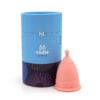





















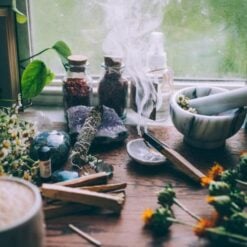


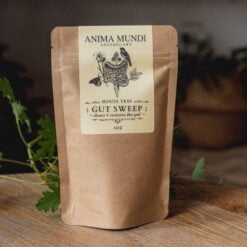
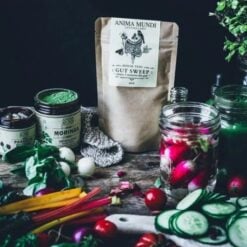

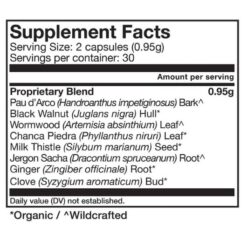












 Beauty Products
Beauty Products By Skintype
By Skintype Brands A-Z
Brands A-Z Wellness
Wellness Health / Nutrition
Health / Nutrition